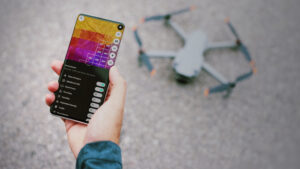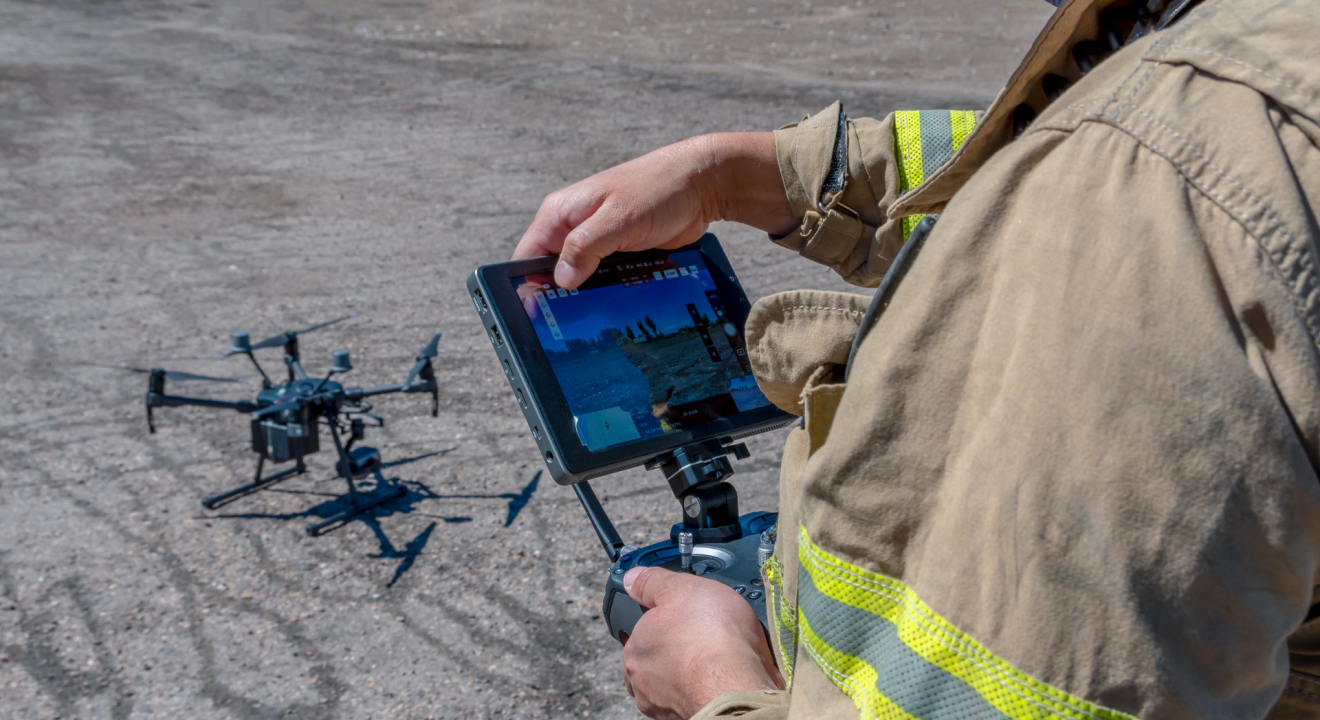Occupations in public safety agencies are inherently hazardous, with first responders such as police officers, firefighters, paramedics, and search and rescue personnel required to rush towards danger while others flee. However, drones and other unmanned aerial vehicles (UAVs) are playing a crucial role in reducing the risks associated with these jobs, offering a range of benefits for public safety workers. They open up new possibilities for this industry’s many and varied facets. Drone technology will allow the public sector to work more efficiently, which will help them be of better service.
Drones have shown to be a competent, sensible, and cost-effective solution when used alongside state-run initiatives. State-run endeavors usually include infrastructure, health care and welfare, nature conservation, law enforcement, public security, disaster response, night operations, and other industrial businesses. These drone technologies are truly groundbreaking, and when combined with AI, can be largely beneficial for these use cases.
In the following sections, we will explore the ways in which drones are providing safety benefits for three key public safety categories, highlighting the specific advantages they offer for each profession’s daily operations.
Law Enforcement
Modern developments in automation show how law enforcement can benefit from the right technology. As drone technology has been sweeping the globe, law enforcement might stand to gain a lot from the deployment of these unpiloted aerial devices.
Police departments across the United States are rapidly adopting drones to improve officer safety. Drones provide real-time aerial data that can guide decision-making in dangerous situations, such as pursuing fleeing suspects or processing accident scenes more quickly. Additionally, drones can create detailed maps of popular locations, such as schools or malls, that may be targeted in an active shooter scenario. Drones can also enter dangerous areas that are inaccessible to officers, like buildings after an explosion or areas with an active shooter. Finally, drones can assist in disaster response efforts by helping police navigate their response to emergencies and locate victims in need of rescue.
Night Operations
Visual assessment is clearly a time-consuming, laborious procedure that necessitates a significant amount of effort throughout the night. Drones’ effective built-in abilities make it possible to undertake airborne inspections with proficiency. Data is collected through UAV surveillance with speed, reliability, and consistency. Drone deployment during night operations is cost-effective since it saves time and energy.
As aforementioned, law enforcement is able to substantially benefit from the deployment of drones. Not just during the day, but with sophisticated lenses and thermal imaging, drones can prevent crimes, report incidents, and locate criminals much faster than humans. Their capabilities extend not only to crime detection but also to natural disasters that occur during the night, such as forest fires.
Assessing Public Infrastructure
Because hazardous conditions can result in tragedies that lead to a loss of life as well as other assets, secure and efficient public infrastructure is vital. Without hesitation, it must be said that a nation’s roads are determined by its assessment of its development rate. On this basis, managing the maintenance of our roads, railways, motorways, and other similarly designed facilities becomes crucial.
Unfortunately, the upkeep might be costly, making it a challenging task. However, technological solutions offer sufficient capabilities to aid in overcoming these challenges. By keeping an eye on the roads as they’re being built, the use of drone technology can help overcome these difficulties.
Workers are encouraged to use drones for creating essential infrastructure because of the advantages of 3D modeling, UAV data compiling, and recording breathtaking aerial photographs. Drones’ high-resolution cameras and sensors enable them to acquire intricate points, especially in remote locations where physical access is restricted. Drones can also spot fractures and other problematic circumstances, safeguarding the well-being and security of the general public.
Firefighters
Firefighters face significant risks when fighting fires, and drones can provide crucial support to make their work safer and more effective. By gathering data remotely on the state of an active fire, firefighters can understand how it’s burning, whether anyone is still inside that needs to be rescued, and other key details to guide their efforts.
One way drones are making work safe for firefighters is by helping them locate victims who may be in need of rescue. This is particularly important in structure fires, where searching for people can be very dangerous. By flying into a building or other areas that are inaccessible or hazardous to human responders, a caged indoor drone can help identify smoldering areas via aerial thermography that may not be visible to the naked eye.
Drones can also fly over ongoing fires and provide crucial visual data to guide firefighting efforts. This includes information on where the fire is moving and thermal data to show where it’s burning the hottest. This data can keep firefighters safe by helping them avoid the more dangerous hot spots in an active fire.
Another important way drones are assisting firefighters is by assessing the risk of entering a burning building or other structure. Using indoor drones, firefighters can assess the risk of building collapse before entering and look for dangerous hot spots using aerial thermography that might not be visible otherwise. This helps ensure the safety of the firefighters and increases their efficiency.
Emergency Management Workers
Drones are not just beneficial for firefighters and police officers, but also for emergency management workers such as EMTs, paramedics, and search and rescue teams. Although these workers may not use drones as frequently, they still see significant safety advantages from drone usage.
One of the ways that drones make work safer for emergency management workers is their ability to locate missing individuals. Searching for a person who has wandered off, been thrown from a car at night, or hasn’t returned from a hike can be dangerous situations for first responders. However, using a thermal drone, they can quickly locate the missing person without having to bushwhack through unknown terrain in the dark, reducing the risk of injury for both the missing person and those searching for them.
Another benefit of drones for emergency management workers is through deliveries. Drones can deliver medical supplies or other essential materials during an emergency, which can help EMTs avoid exposing themselves to potentially dangerous situations. For instance, during the peak of the COVID-19 pandemic, medical personnel could use drones to make food and medical deliveries while standing at a safe distance.
To read more about SkyGrid’s efforts to dive deeper into the benefits of drones in night operations, visit us here.


